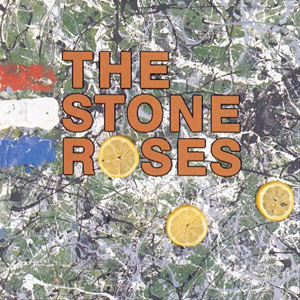
The Stone Roses: 20th Anniversary Edition
Legacy/Silvertone
With the passage of time (and an incredibly disappointing second album), it’s hard to remember that there once was a moment when the Stone Roses were perhaps the most exciting band in the world. With the release of the band’s self-titled full-length debut, they had, if not ushered in, then at least best encapsulated a new sonic hybrid. The record was the Manchester sound incarnate, a blend of acid house beats, derived from the dance craze that had swept England just a few years prior, and a churn of sparkling guitar chords of Byrdsian and Mersey decent. With Ian Brown’s daydreamed vocals, the Stone Roses, along with Mancunian brethren like the Happy Mondays, were the epitome of a new strain of psychedelia, one with a poppier and danceable bent more suited to the euphoria of ecstasy (the baggys’ drug of choice) than the ups and downs of LSD.
Fortunately, Legacy has seen fit to give us a reminder of those hazy days—or at least to try to capitalize on them again. For the 20th anniversary of the seminal record, the label is issuing the album in four deluxe editions, remastered by producer John Leckie and Brown. The “Special” edition is simply the remastered album; the “Legacy” edition adds a second CD of demos and a DVD containing a 1989 performance at the Blackpool Empress Ballroom; while the “Collector’s” edition also includes a third CD of singles and B-sides, a 48-page booklet, a lemon-shaped USB featuring a home movie and additional material, six prints from guitarist (and now visual artist) John Squire, and the material from the CDs on three vinyl records. The remastered album is also available as a single record in gatefold packaging with a 7-inch of unreleased cut “Pearl Bastard.”
There’s good reason to hold this record in such reverence. Rarely has an album been so perfect from start to finish. When Brown sings, “I don’t have to sell my soul,” on opening credo “I Wanna Be Adored,” he’s right. If anything, the devil should be making crossroads deals with him to make a record this good. Brown’s almost prophetic by simply mouthing the word’s title, at the same time putting a sunnier spin on the Stooges’ similarly sounding plea from 20 years earlier.
That shimmery sense of utopia pervades the album. On “She Bangs the Drums,” Brown “spirals through another day” just as Squire’s guitar work and Reni’s manic drumming echoes the sentiment. “Waterfall” mesmerizes in a similar way, with cascading guitar lines flowing together with a shuffling beat into pop bliss. “(Song for My) Sugar Spun Sister” is fittingly sweet, a mellifluous ode idyllic in both tone and ardor, and “Made of Stone” is buoyant as it paints a hazy shade of winter. However, it is “Shoot You Down,” a lazy, lost love paean, that really captures the imagination. Slight-of-hand drums and an understated guitar line meander with Brown’s gentile vocals in what is just a subtler form of all that the band does so right.
The album’s closer, “I Am the Resurrection,” may be the coup d’etat, beginning slowly at first with a plunky bassline before propelling into a pandemonic flurry of frantic beats and electrical riffs, but it’s the refrain of “This Is the One” that sticks around. When Brown sings, “This is the one I’ve waited for,” over thunderous drums, he could just as well be putting the listener’s response into words.
The “Extras” disc of varied cuts taken from singles proves to be almost as essential as the album itself. The near 10-minute “Fools Gold,” which was included on the original American CD, perhaps best exemplifies the Stone Roses’ MO. Here, Reni’s gilded beats are the focus, with a minimal bassline, intermittent guitar washes and frenetic vocals being the only accouterments. It’s a seemingly endless groove, perfectly straddling acid house rave and lysergic rock motif. “One Love,” a single released after Stone Roses, is equally crucial, eight minutes of ecstatic rhythms and oscillating guitar.
As for the rest of the supplementary materials, the demos and the DVD, they are slightly less indispensable. The demos, well, they sound like demos, less polished, but already obvious as the songs that would make the record. “Pearl Bastard,” the one song that never made it to an album or B-side, is slow-paced and neither here nor there, just somewhere in between. The concert footage is more entertaining, with the band running through just about all of the album. With Brown’s bobbing bangs and a constant swirl of lights and music, the heady atmosphere of which the Stone Roses were a part is rendered vividly.
There should be little doubt to the vitality of Stone Roses, even with the band refusing to ever join the current glut of reunions. This is an album that captured a time and a place, while at the same time transcending them. These 50 minutes are the stuff of legend, untainted even by the band’s digressions and forever glistening with a rare ingenuity.
Stephen Slaybaugh
PAST PERFECTS
Ze 30: Ze Records 1979–2009
24-Carat Black, Gone: The Promises of Yesterday
Beastie Boys, Ill Communication
Book of Love, Book of Love, Lullaby, Candy Carol and Love Bubble
The Scene Is Now, Total Jive
REM, Reckoning
Black Rio 2: Original Samba Soul 1971-1980
Pisces, A Lovely Sight
Big Star, #1 Record/Radio City
Mirrors, Something That Would Never Do
Various Artists, Smart's Palace
Miles Davis, Sketches of Spain
39 Clocks, Zoned
Company Flow, Funcrusher Plus
